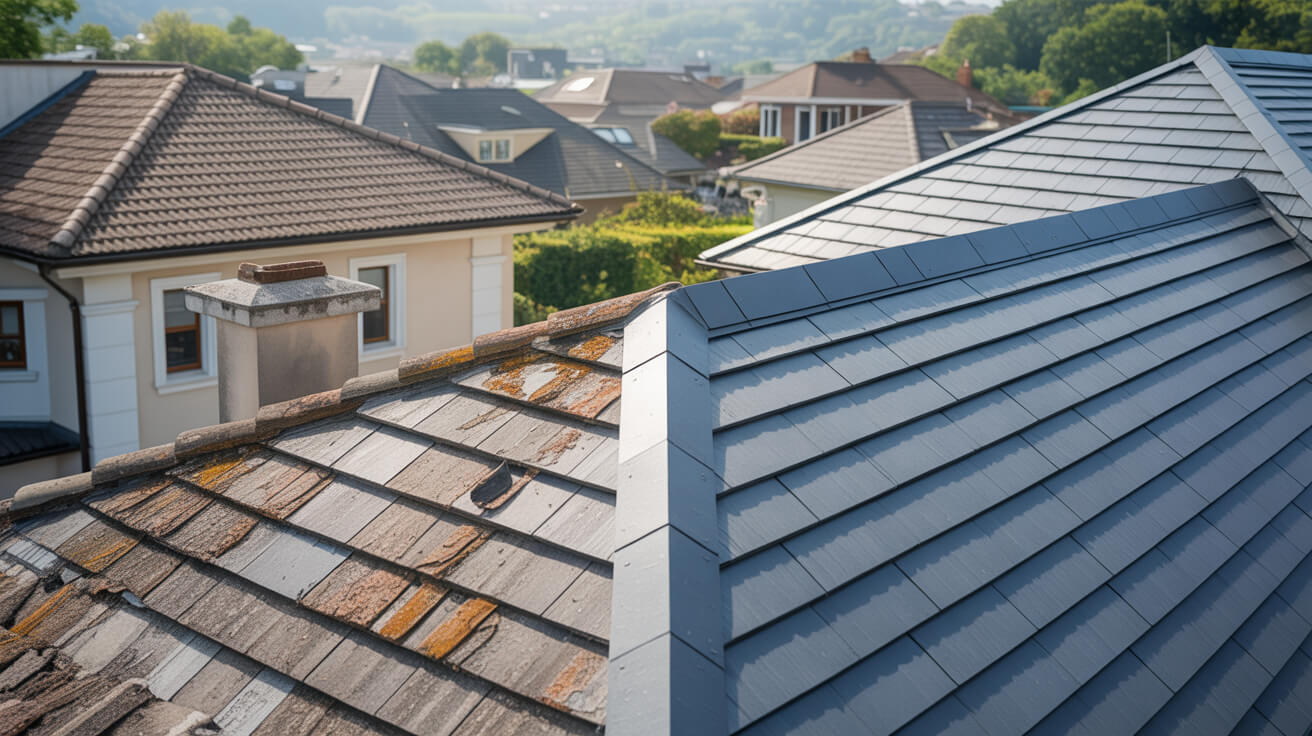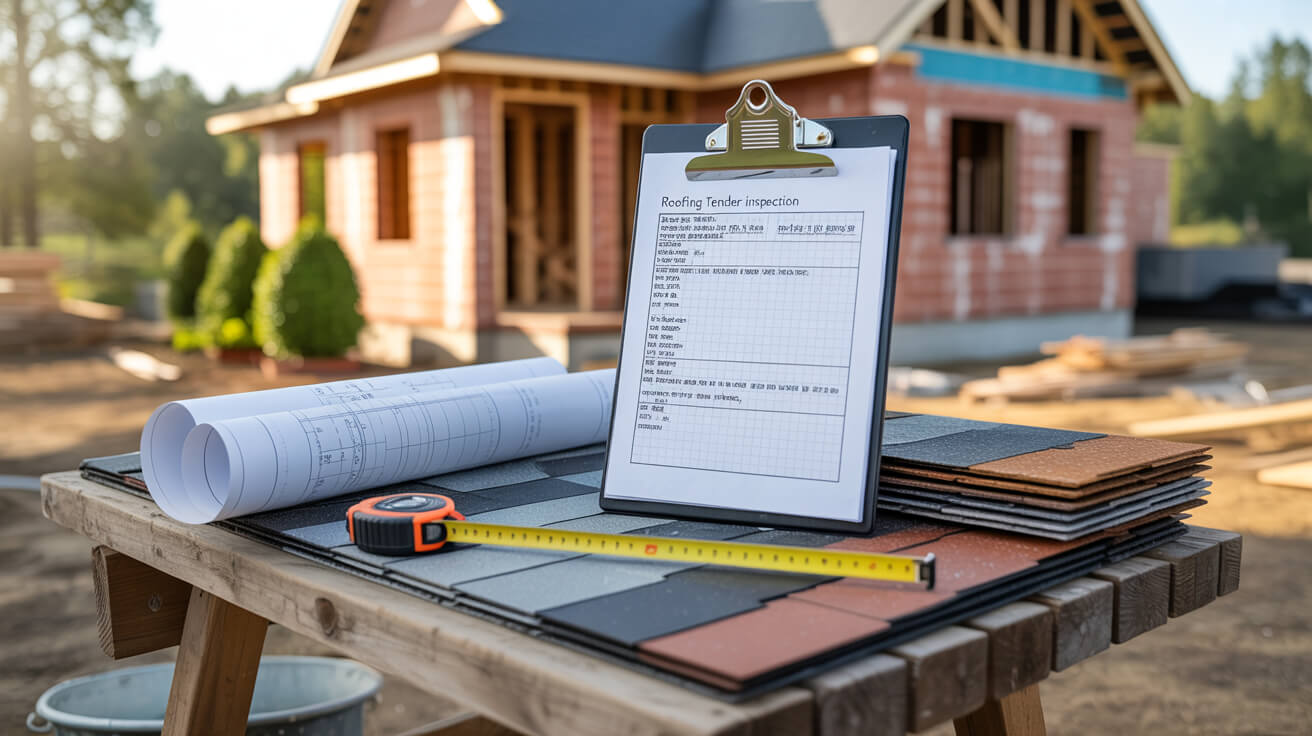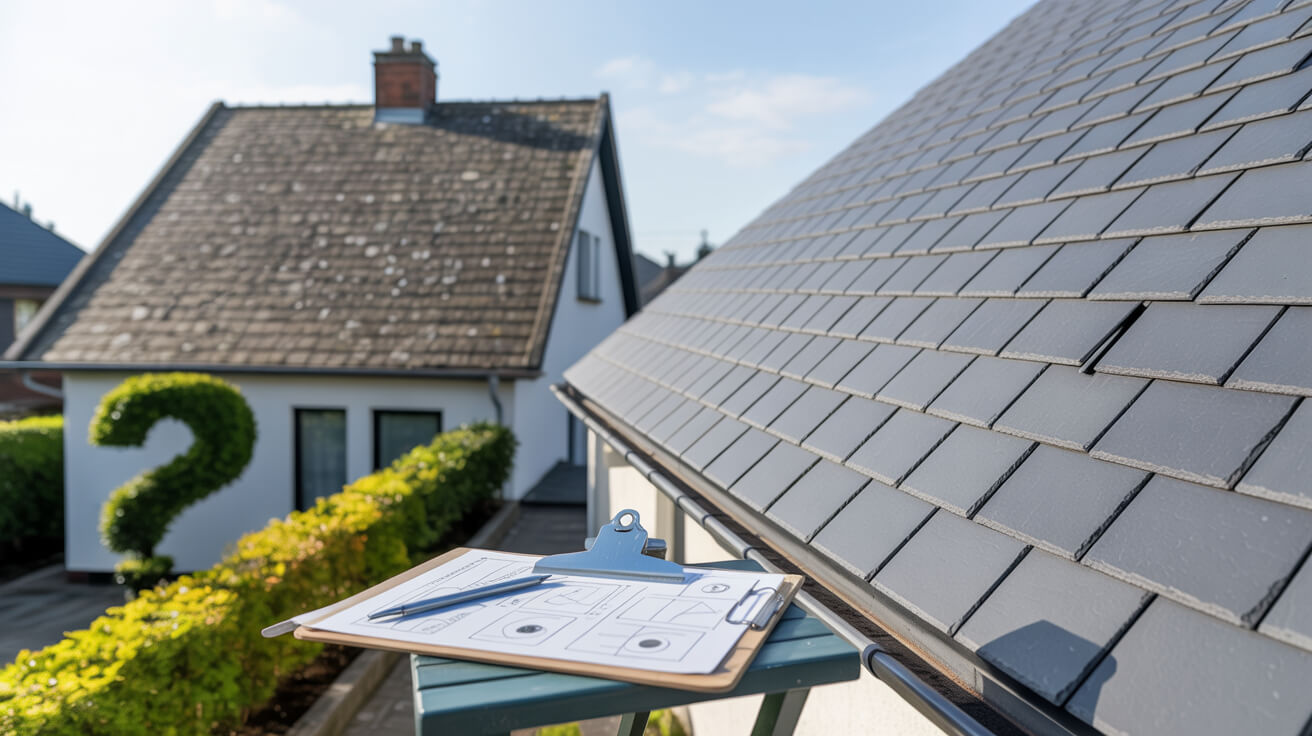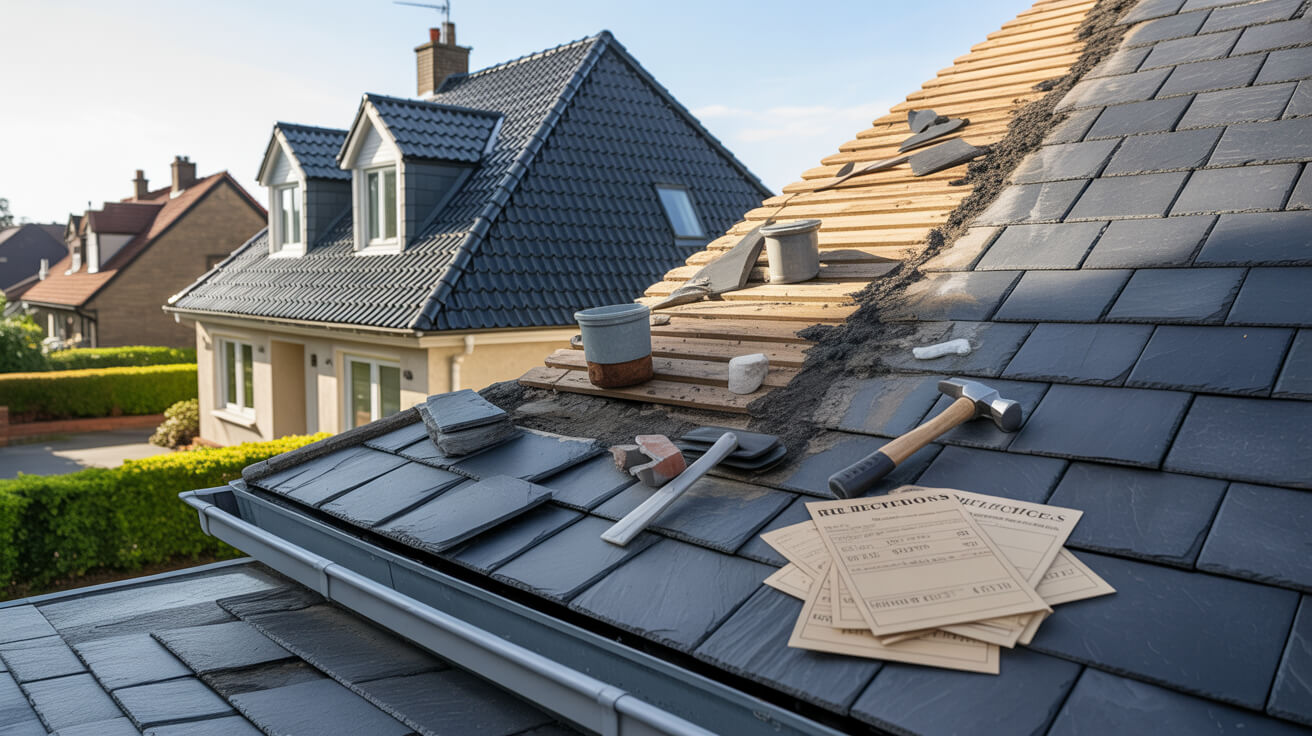 Using Modern Underlays in Heritage Roofs What’s Allowed
Using Modern Underlays in Heritage Roofs What’s Allowed
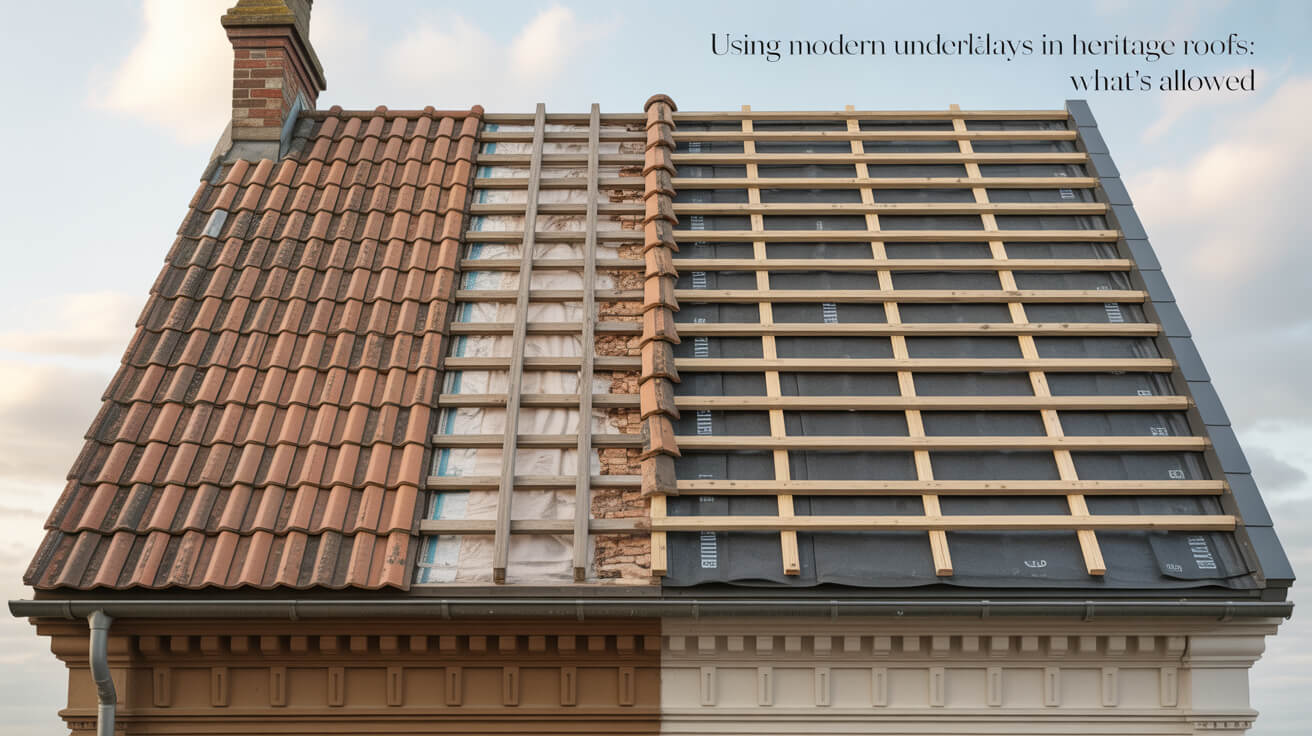
Unlocking the Value of Modern Underlays in Heritage Roofs
Roofing decisions made for heritage properties echo through generations. The transition from tradition-bound methods to modern underlays is not simply technical—it’s a test of your project’s vision, longevity, and compliance mindset.
For heritage and listed buildings, roof upgrades are fraught with regulatory scrutiny, material compatibility debates, and budget-conscious anxiety. That tension—fear of structural risk or loss of historic character—can paralyze action. Yet beneath every hesitation lies the opportunity: use advanced underlays not as a shortcut, but as the mechanism for safeguarding legacy and maximizing future efficiency.
Modern underlays offer you:
- Sharper waterproofing and vapor management
- Documented improvements to energy performance
- Simplified, cleaner installation profiles minimizing disruption
- Configurability to specific conservation requirements
The status quo—repairing with ‘what’s always been done’—is a path to compounding maintenance, unpredictable costs, and the subtle erosion of historic value. Every year, British surveyors report millions lost to undetected underlay failures or subpar upgrades on period properties.
Yet, with a precise approach—rooted in current British Standards, historic building codes, and a concrete understanding of material science—your roof replacement or restoration can move from uncertainty to asset protection.
If you’re weighing material trade-offs or staring at a complex conservation consent form, you’re not alone. Your real challenge isn’t “Is a modern underlay allowed?” but “How do I choose the best underlay—and prove it’s right—for this heritage roof?”
This guide arms you with actionable clarity—linking aspiration to compliance, performance to preservation, and your next decision to the roof’s next century.
What Makes Heritage Roofs Unique and Worth Preserving?
What sets a heritage roof apart is more than history; it’s the convergence of craftsmanship, material nuance, and legal protection. For every period tile or hand-formed lead bay, there’s a reason—historical, architectural, or regulatory—to do more than ‘just repair.’
Heritage Systems Defined
- Material palette: Welsh slate, handmade clay tiles, code-5+ leadwork—selected for both regional climate and local tradition.
- Construction techniques: Lime-mortar bedding, ventilated counterbattening, soft-metal flashings—built up over centuries.
- Regulatory scaffolding: Consent governed by Conservation Officers, SPAB, Historic England, and local authorities.
- Aesthetic imperative: Every visible and hidden layer contributes to the building’s identity and market value.
Regulatory requirements are not barriers—they are the lineage of your investment. Key standards like BS5534 not only dictate wind uplift resistance and fixing patterns, but they also drive insurer acceptance and facilitate insurance-backed guarantees.
Every technical shortcut, from the use of synthetic underlayments to plastic-based vent details, could be rejected by planners and surveyors if the wrong product is specified. The price of non-compliance? Delayed projects, forced strip-outs, and even listed status at risk.
Yet, the pursuit of preservation too often leads to inertia—delaying essential upgrades until minor issues morph into catastrophic water ingress or rot.
Masterful heritage roofing is an act of futureproofing—aligning every decision with today’s standards, yesterday’s wisdom, and tomorrow’s risks.
If you’re not certain your team knows which regulations override others, or how to demonstrate compliance in plain English, you’re already losing time and money.
How Do Modern Underlays Significantly Improve Heritage Roof Performance?
Britain’s building stock teaches a simple lesson: what is hidden is often what fails first. Traditional felt or bitumen underlays—once seen as timeless—are easily undermined by condensation, UV, and lack of breathability. Modern underlays are not gadgets; they are the stealth guardians of efficiency, dryness, and compliance.
Composition and Science
- Materials: Polyolefin and microporous membranes offer vastly improved MVTR (moisture vapor transmission rate), UV resistance, and tensile strength over tarred felts or sanded bitumen.
- Installation: Light, flexible, and pre-marked underlays reduce interface risk and cold-bridging.
- Performance: Breathable variants enable vapor escape without inviting wind-driven rain or pests.
- Sustainability: Lifespans have doubled, and most contemporary options are recyclable and low in embedded carbon.
Comparative ROI
- Owners who upgraded to high-spec underlays report lower annual damp-related outlays, and fewer surveyor flag warnings—even after exceptional weather seasons.
- Our technical data, validated against real-world installations, shows up to 30% fewer freeze-thaw induced repairs with the right membrane specified.
If you weigh first costs against the likelihood of avoidable rot or impaired insulation, modern underlays are no-brainers for almost all but the most stringently “only original allowed” conservation mandates.
Remember: choosing the wrong underlay is not a question of if you’ll pay more, but when, and how much.
Are you willing to risk using legacy felts that no insurer—or building control officer—would approve for your property’s next 30 years?
What Regulatory Standards Govern Modern Underlay Selection for Heritage Projects?
Roofing isn’t just a craft; it’s a regulated science. The wrong membrane—not just the wrong tile—can bring failed inspections, refused claims, and contract remediation at truly distressing costs.
Key Standards and Codes
- BS5534: Defines tile and slate roofing standards in the UK, mandating wind resistance, fixings, and compatibility for underlays. Heavyweight underlays must prove endurance under mechanical and weather stress.
- SPAB Guidance: The Society for the Protection of Ancient Buildings insists any innovation must “do no harm”—mandating like-for-like replacement unless benefit is clear and compliant underlays are proven by independent test.
- Listed Status: Consent may hinge not only on visible material choices but also on test data proving new membranes don’t alter building ‘breathability.’
- Insurance and Warranty: Non-compliant underlays void many policies or exclude water ingress claims.
Compliance is not optional. The cost of ignorance? Entire valley sections stripped and re-laid when random felt sheets are discovered. Professionally certified installation stands as the clearest proof—a shield against both statutory penalty and client recourse.
If your specification or builder’s quote does not explicitly name compliant, traceable underlay products that align with BOTH period sensitivities and current law, you risk project paralysis and asset devaluation.
Clarify compliance before procurement, not after the inspector’s report.
How Can Performance Metrics and Breathability Inform Your Underlay Decision?
Moisture, breathability, vapor, and heat transfer are not theoretical—they are the real enemies within every roof stack, especially in heritage and listed structures. The right modern underlay elevates damp control, comfort, and longevity.
Key Metrics to Examine
- MVTR (Moisture Vapor Transmission Rate): Indicates how well trapped vapor can escape—higher values reduce the risk of interstitial condensation.
- Tensile Strength: Determines tear/sagging resistance over time, especially under snow and wind stress.
- Fire Rating: Many heritage authorities—and most insurers—now mandate Class E or better to prevent unseen hazards.
- UV Resistance: Crucial under clay tiles/slate with occasional exposure (e.g., ridge, verge) which degrade non-compliant felts.
- Thickness and Flexibility: Impacts how easily underlays maintain coverage over uneven period rafters and purlins.
Empirical Data:
Multiple case studies in 2023 demonstrated 22–38% reduction in under-deck humidity and halved cold-bridge failures where high-MVTR underlays (with proper lap taping and certified installation) replaced traditional felts on pre-1900 townhouses.
Selecting a product without an independent performance datasheet, or that cannot be matched to your roof’s precise details, is functionally an invitation to future maintenance claims.
Where Are the Hidden Risks and Aspirational Opportunities in Underlay Upgrades?
Every shortcut tempts with savings, yet hides real costs: call-backs, failed audits, impulse patching, or the gradual destruction of what makes a building admired.
Main Opportunities
- Enhanced service intervals: Re-roofing timelines extend by decades—not just years—when compliant modern membranes are specified.
- Improved resale and insurer value: Properties with traceable, tested upgrades fetch higher surveyor and buyer ratings.
- Lower lifetime “hassle factor”: Water ingress, damp, or trickle leaks become rare exceptions, not seasonal norms.
- Access to modern funding: Retrofits aligned with energy efficiency standards often unlock grants or preferential insurance.
Hidden Dangers
- Skimping on spec leads to non-compliance—a recurring audit fail point for listed buildings.
- Relying on builder’s “always done it this way” logic exposes your asset to rising condensation, unseen rot, and invalidated policies.
- Not every breathable underlay is the same. Without precise MVTR and wind-resistance, so-called “breathable” options risk trapping moisture or waving loose under period tiles.
Risk isn’t whether you spend—it’s where, and when, your money will be claimed back by the property.
If your builder—or specifier—cannot name the underlay, show compliance, or match performance data to your context, pause. This is not the moment for ambiguity.
How Does a Compatibility Matrix Unlock Confident Roofing Choices?
The roofing market is awash with “approved” and “recommended” underlay brands. None can promise universal fit. That’s why a compatibility matrix is your secret weapon for precision—transforming marketing claims into actionable, risk-adjusted decision steps.
What to Look for
- Performance Matching: Cross-check MVTR, tensile strength, and fire class against roof type, slope, exposure, and historical mandates.
- Conservation Status Alignment: See at-a-glance if an underlay passes current guidance for listed status or conservation area rules.
- Direct Cost and ROI Links: Tabulate predicted service life, maintenance frequency, and insurance influences—all in one frame.
- Install Protocols: Confirm not just that a membrane is certified, but that its installation requirements align with your project’s craft realities.
A data-driven tool, like our matrix, does more than inform. It provides a clear, auditable trail of why you chose what you did—arming you, your organisation, or your builder against audit, regulatory pushback, or a future sale negotiation.
If you’re investing in a property worthy of legacy status, you deserve more than a single-fix quote—you need a full systems map, accessible whenever roof queries or surveyors re-appear.
Download the Underlay Compatibility Matrix to see exactly what options fit your roof’s needs—no guesswork, no drama, just certainty.
Book a Detailed, Heritage-Ready Roofing Consultation with JG Leadwork and Roofing
Every heritage roof commands respect, but excellence demands precision—on the ground, on the drawing board, and in every layer above the rafters. If you need more than a menu of underlay types or a hopeful quote—if you expect compliance, full documentation, and a guarantee that history and efficiency will align—then you are exactly who we built our approach for.
What our consultation offers you:
- A site-tailored technical survey backed by British Standard compliance
- A clear, actionable plan mapping underlay choices to specific regulatory and conservation outcomes
- Proof-layered documentation—crucial for consent, insurance, or future audits
- Step-by-step project planning, lessening disruption while maximizing longevity
Our expertise isn’t just installing the right material; it’s architecting long-term value for heritage owners determined never to compromise legacy for a short-term fix.
Don’t leave your most valuable asset—your building’s future integrity—to chance.
Book your comprehensive assessment today and receive a roadmap for both compliance and performance that lasts generations.
Request Your Heritage Roof Consultation
Internal Links to Explore
- Roof Inspection & Leak Detection Expertise(/roof-inspection-leak-detection)
- Lead Roofing & Conservation Services(/lead-roofing-conservation)
- Flat Roofing Systems: Performance & Compliance(/flat-roofing-systems)
- Guide: Understanding BS5534 Standards for Roofing(/bs5534-guide)
JG Leadwork and Roofing: Where every heritage roof finds the future it deserves, without losing the past that made it special.
Frequently Asked Questions
What are modern underlays and why do they matter for heritage roofs?
The Foundation of Heritage Roofing Performance
Modern underlays act as the unseen guardians of your heritage roof—delivering a blend of protection, breathability, and compliance that traditional felts simply can’t match. In heritage restoration, the stakes are always high: condensation, rot, and unseen leaks can unravel decades of careful maintenance in a matter of seasons. With historic properties, each hidden layer is the difference between quiet longevity and invisible, compounding risk.
Where once tarred felt or bitumen beneath your tiles or slates seemed “good enough,” time has revealed their blind spots—trapping moisture, inviting fungal decay, and failing at the very moments you needed them most. Today’s advanced membranes, built to excel in British climates, let your heritage roof breathe without letting in wind-driven rain. They balance moisture management and structural stability while minimizing disruption to listed or period details.
Your duty as steward isn’t just to keep the rain out; it’s to future-proof your investment against mounting regulations, shifting property values, and the scrutiny of conservation officers or insurers. The right modern underlay stands as proof—not just of compliance, but of long-term care and strategic foresight. By integrating high-performance membranes tailored for period construction, you turn a hidden liability into quiet asset protection, with JG Leadwork and Roofing providing technical validation at every step.
How do modern underlays compare with traditional options in breathability, durability, and compliance?
Outpacing Tradition: Performance Metrics and Heritage Demands
Your roof’s underlay sets the baseline for every other choice. Relying on yesterday’s materials opens the door to moisture traps, wood decay, and compliance failures—issues only visible when they’ve become both urgent and costly. Today’s high-grade synthetic and composite underlays have redefined what’s possible, with:
- MVTR (Moisture Vapour Transmission Rate) up to 6–10x higher: than standard felts, meaning less condensation, less mildew, and fewer insurance dramas.
- Robust tensile strength, so membranes stay tight and seamless even on warped rafters or historic lath.
- A service life measured in decades rather than years, minimising the disruption and cost of repeated interventions.
- Third-party certifications, providing insurance and planner-accepted proof of suitability—no more rolling the dice at every inspection.
Regulatory standards like BS5534 and EN 13859-1 have rewritten the rulebook for what’s acceptable. Breathable underlays allow moisture to escape, avoiding damp buildup that damages your structure’s unseen bones. Fire-resistance and UV stability prevent complication with conservation officers and keep your property in good standing with both insurers and future buyers.
| Performance Area | Traditional Underlay | Modern Breathable Membrane |
|---|---|---|
| MVTR | 400–600 g/m²/24h | 2000–3200 g/m²/24h |
| Typical Warranty | 5–10 years | 20–40 years |
| Compliance Proof | Rare | Standardised, audit-ready |
| Fire/UV Tested | Sometimes | Always |
Switching isn’t about newness for its own sake—it’s about eliminating compounding risk, simplifying maintenance, and matching the architectural intent with solutions that last. JG Leadwork and Roofing only recommend and install underlays aligned to these benchmarks, allowing you to restore with confidence—not a question mark.
What regulatory standards govern modern underlays in heritage roofing projects?
The Unseen Gatekeepers: Compliance and Conservation Law
Heritage roofing is as much about documentation as craftsmanship. Failing to meet standards exposes your project—and by extension, your building’s value—to delays, insurance rejections, and forced removals by planning officers. Regulatory expectations have one purpose: to sustain the balance between legacy aesthetics and modern performance.
- BS5534 and EN 13859-1: demand membranes that endure wind uplift, resist mechanical strain, and support the specific fixings used in period roofs.
- SPAB (Society for the Protection of Ancient Buildings): insists on “no harm, full reversibility,” meaning only underlays with certified breathability and retrievability are now routinely accepted.
- Listed property consent: hinges not only on visible finishes, but on clear specification and performance data for unseen layers beneath the surface.
Skipping these steps or “fudging” documentation can result in disastrous hairpin turns: work stoppages, legal action, and long-term reductions in asset value. Planners and surveyors increasingly require full traceability—manufacturer’s datasheets, certified installer paperwork, and in-context performance tests.
JG Leadwork and Roofing manages all compliance proof as part of our heritage restoration services, giving you audit-ready confidence from your first site visit to completion and beyond. Don’t leave compliance as an afterthought—make it your project’s starting point.
How can technical performance metrics (breathability, MVTR, tensile strength) guide your underlay decision?
When Numbers Mean Long-Term Certainty
You can only manage what you can measure. Heritage buyers and owners expect modern excellence on old frames, so performance metrics become the silent heroes of your restoration story.
- Breathability (MVTR): High MVTR lets your roof “exhale” excess moisture, protecting timber and original construction from hidden condensation.
- Tensile Strength: Determines durability on roof structures that are rarely flat or uniform; sagging or rupture means rapid failure, so stronger is always better.
- Fire Rating: With increasing scrutiny on property insurance, make sure your membrane meets Class E or better—especially for lead or timber-framed buildings.
Real-world data trumps marketing fluff. The right underlay, tested and certified to deliver on these numbers, not only turns compliance from headache into done-deal, but ensures you never gamble with hidden costs. If your chosen product lacks a straightforward technical document or fails to list out its values by spec, you’re being asked to buy on faith—not engineering.
We provide comprehensive side-by-side comparisons for each project, ensuring every metric matches both conservation and insurance expectations.
What are the hidden risks and long-term costs if you select the wrong underlay for a heritage roof?
Consequences That Linger: From Moisture Traps to Project Delays
The wrong underlay doesn’t always announce its failure with a flood—it whispers it with creeping decay, silent rot, and denied claims. Period structures are especially vulnerable to changes in material permeability or insulation, and mismatched membranes have the power to lock moisture in, warping timbers and accelerating hidden mold.
- Strip-out orders: from planning officers or surveyors, sometimes years after install, when subpar or uncertified products are discovered beneath tiles.
- Insurance exclusions,: triggered by missed compliance or lack of full traceability, can leave you exposed to ruinous bills from a single bad winter.
- Accelerated decay: Low-quality felts or non-breathable synthetics turn slow-building problems into sudden, expensive crises.
Short-term savings quickly become false economies. Every restoration or upgrade JG Leadwork and Roofing undertakes is rooted in risk minimization; we proactively specify, source, and validate membranes so every hidden layer defends your asset—not chips away at its value.
How does a compatibility matrix help you make the right decision for heritage roof underlays?
Bringing Clarity to Complexity: Every Option, Precisely Compared
Decoding technical specs and planning approvals is exhausting when every supplier promises the same thing. A compatibility matrix transforms anxiety into control by organizing key criteria—breathability, tensile strength, compliance, fire resistance, warranty, and consent compatibility—into a transparent, single-view decision map.
Rather than chasing answers from forum threads or relying on sales claims, you gain:
- Direct side-by-side comparisons: for every certified membrane adjusted for age, exposure, and architectural type.
- Instant disqualification: of options that don’t meet the unique demands of your heritage roof, saving both time and hidden expense.
- Clear line of sight to compliance,: so planners, insurers, and surveyors all see you’ve thought ahead.
| Membrane Option | MVTR (g/m²/24h) | Fire Class | Certified For Listed Use | Warranty (Years) | Installer Approval |
|---|---|---|---|---|---|
| A | 2800 | E | Yes | 30 | Yes |
| B | 1700 | F | No | 20 | No |
| C | 2200 | E | Yes | 25 | Yes |
Your investment in a compatibility matrix—embedded by default into every JG Leadwork and Roofing proposal—removes anxiety, speeds up planning approval, and locks in certainty for your roof’s future—exactly what every prudent owner, manager, or contractor strives for in today’s climate.
